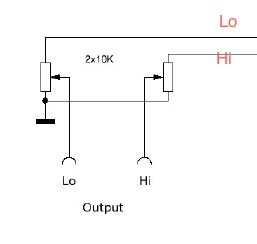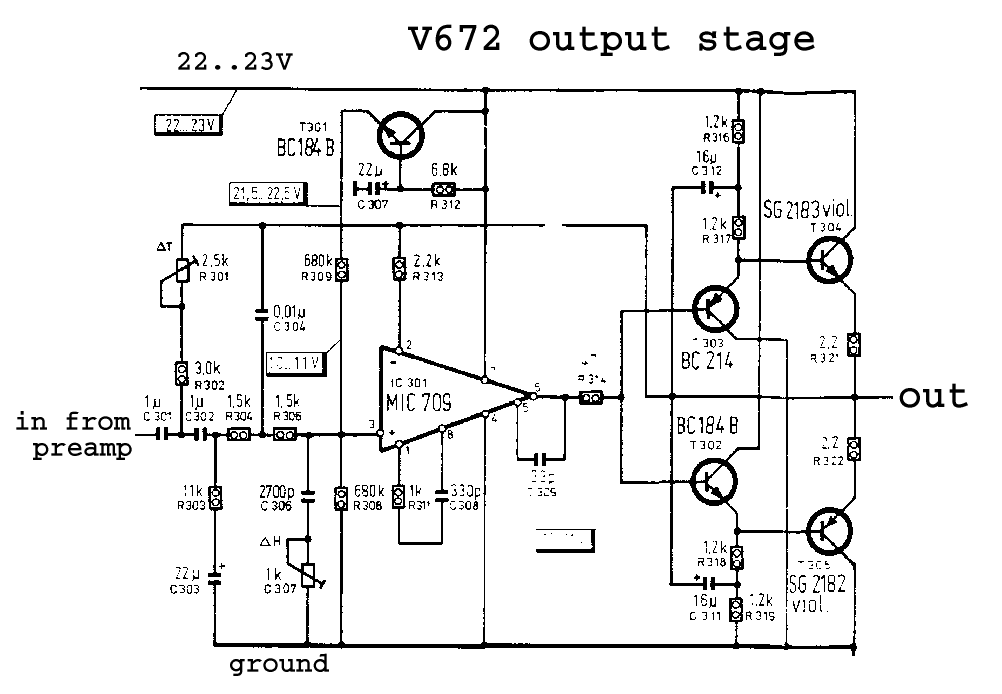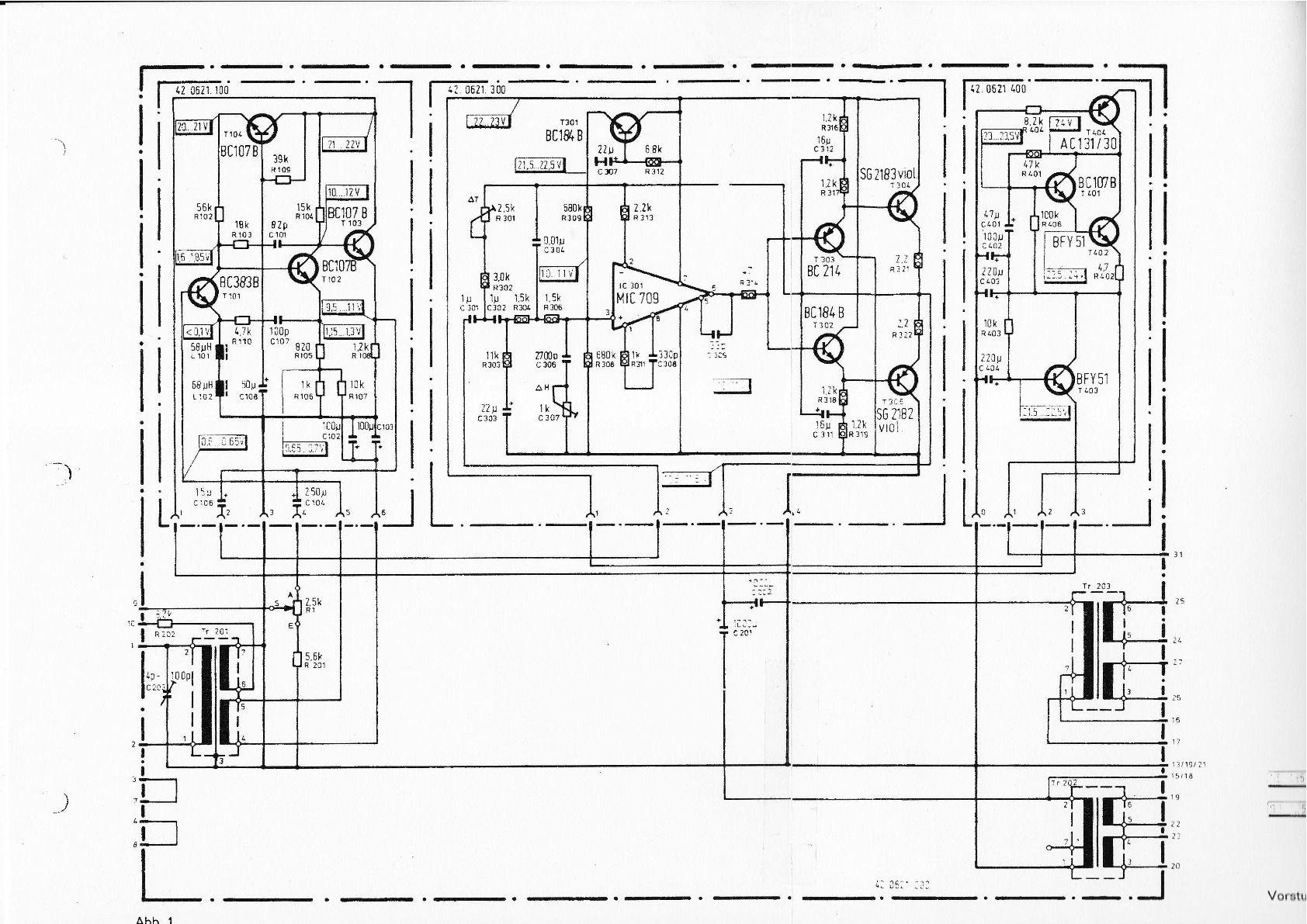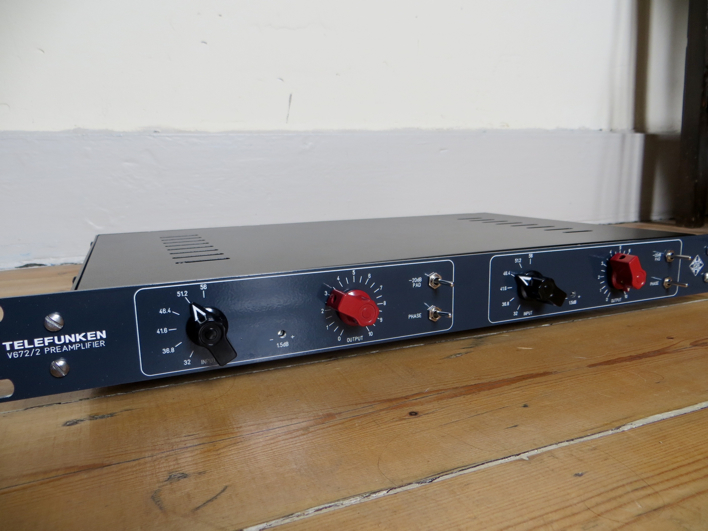Hello Bram,
You are very welcome.i am happy if i can help you a little bit,a rare Situation here for me because i respekt this place alot and don t want to give wrong Information. Maybee someone who is more informed than me could correct my wrong thoughts,that would be nice... its also interesting for me.
Your Solution may work,but.
1) These Outputtrannys don t like to work into a high impedance Load.They like something like 2 k ohm or less , if you connect a 10k Poti like done in your configuration your Outputtranny don t like it too much.and
you also end up with a variable Source impedance related to the given Position of the Poti for the next Unit.
Let s say you like to power up a 1176 as the next unit or another vintage gear with low input impedance input like a Neumann,Filtec,Tab,Siemens etc EQ, you may get a very bad sound with this Konfiguration, harsch mid s ,less Bass, distorted high Freq..Impedancemissmatch.(frequencyrelated and general Levelloss) i can talk from own experience,i pluged some of my V 76 stuff in the not best way in the Past I concected them directly in my Da 88 and my Ampex R2R ,they both have the modern 20 k ohm inputimpedance .Now they sound much better because I terminated the Output with 1,5-2,5 kohm.(just put a Resistor in this Range between pin 2 and pin 3 in the xlr,)but only if you plug in in a unit with at least 10 k Ohm Imputimpedance, if you go to prof. vontage gear , than without this Resistor)
The next is the lost balance between the Lines, caused by unlinear Potis.Expekt plus minus 4-7 dB or more. Thel audio offers laser trimmed precission Potis, they are nice but dost something like 100 each. If a dualpoti is the wish i woud go for 1k or 1,8 k Linear, than you can connect most of Your Audiogear without thinking all the time when you change something in the Patch. i really think that a standart Poti in a balanced Line is a bad thing because you destroy your balanced signal and if Transformers involved i think You loose a important part of the advantages of Transformercoupling when a resistor is in between. The Outputwinding "see" the resistor Load (the Poti, or a Resistor ) the Inputwinding of the follwing Transformer also "see" a resistor instead of the coil .......,i don t know...
Noise may also come to mind with your 10k ohm solution.
You can build a few different Patchcords with different damphings first. Just tie a 500 ohm Resistor between pin 2/3 and a 500 Ohm in each (posive,negative Audio )line.that shout be a -6dB Pad.The Resistor between the Audiolines represents the Load for the Output
the Resistors in the Lines represent the Load for the next input.
I have a nice artikel about how to calculate the correct Pad. http://www.uneeda-audio.com/pads/ Hope this helps. Its very good explained how to build a matching Pad.
An other possibility could be to put a 2k Poti between the positive and negative Audio. The Input from the poti in the positve, the wiper to the negative, leave the endpart from the poti alone. 0 ohm means short,no Signal ,if You increase it should be variable Output ,you can try ..i don t know if it s good and works only in units with a good balanced Signal., But this impact change Your Impedance as well. i saw this Way of Dampening the Output in a Eastgerman Isolationamp i really like to use.after moding.
I would stay away from Potis. This Amp is a fantastic peace of Gear, so i wouldn t mess around with that perfektly balanced Output Signal,only with a matched Pad you can be shure to have the full potential left.
Greetings from Berlin
Lothar






